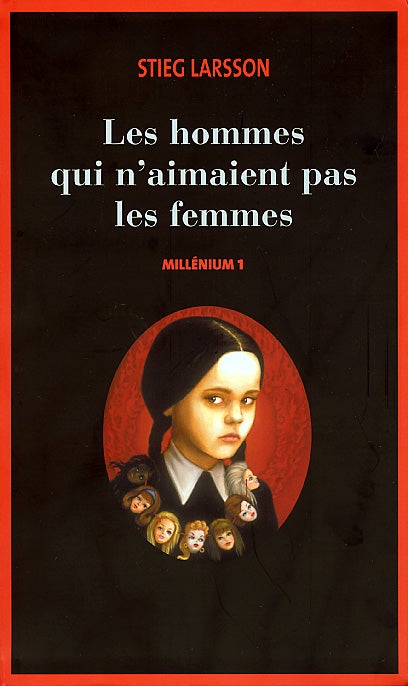
The original.. at least in France…
I am still doing my morning runs (up to 6 miles today), and I am still listening to the books on tape version of The Girl With The Dragon Tattoo by Stieg Larsson.
I am captured by the book, besides its great story, because I lived in Stockholm for two years and worked for Jan Stenbeck, the notorious Swedish billionaire who makes a few cameo appearances in the novel.
The book was originally titled Men Who Hate Women, and it is to some extent an indictment of how Swedish men treat women. No one comes across very well (at least no man) in so far as their treatment of women.
This institutional misogyny greatly reinforced a thesis first put forth by my dear friend, the late Len Shlain.
Shlain wrote a wonderful book The Alphabet vs. The Goddess, in which he (a neursurgeon by trade) postulateed that as we moved from an image based culture (goddess) to a print-based culture (written bibles), we also migrated from a left brain cuture (emotion) to a right brained culture (linear) and in doing so, moved from a female driven society to a male based one.
It’s an interesting thesis, an it seems to be borne out historically.
The Second Commandment of the Old Testament after all is ‘thou shalt make no graven images’, effectively crushing images. Women don’t fare much better in the ‘old world’ religions. As we now move from a print based culture back to an image based culture (video and TV, not to mention computer screens), you can see the concurrent ascendancy of women in positions of power and a feminization of society.
I think to some extent the rise of fundamentalist Islam is a response to this rising culture of images and women, both antithetical to Islam. If anyone denies ‘graven images’ it is Islam, which forbids and likenesses in its art (and thus its concentration on caligraphjy).
As for how Islam treats women, one must only look to the burkha and not much beyond.
And don’t get me started about how Orthodox Jews treat women.
As for Sweden, the arrival of Protestantism and the printing press seem to come concurrently, and indeed it is unlkely that the protestant reformation could have taken place without the arrival of the printed book and text. One of the precepts of the Protestant movement in fact was that the bible should be written in the vernacular and widely read by the public.
That rise of literacy and a print based culture carries with it for some strange reason the desire to crush the Mary cult in Christianity, th most feminized part of the religion.
And, as it would appear in Sweden, it also carried a concurrent kind of misogyny.
Or maybe I am reading (or listening) too much into it.